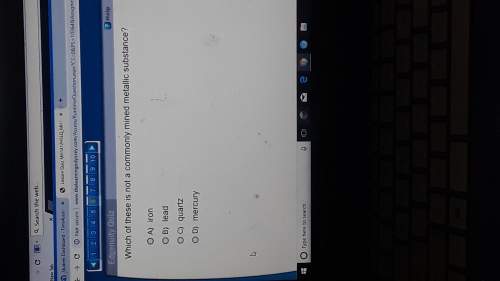
Chemistry, 18.11.2020 17:10 yungdaggerdic4543
When a solution is allowed to crystallize slowly, impurities are excluded from the growing crystal structure because: A. The molecules in the crystal lattice are cooler than the solvent and impurities would have too high a melting point to join the lattice. B. The molecules in the crystal lattice are in equilibrium with the molecules in solution and molecules that don't fit well into the lattice (impurities) are likely to return to the solution. C. Impurities could never join the lattice because they are always liquid at room temperature. D. During slow crystallization, impurities are prevented from joining the crystal structure because of their ionic strength.

Answers: 3


Other questions on the subject: Chemistry



Chemistry, 23.06.2019 01:40, mandilynn22
Calcium carbonate decomposes at high temperatures to give calcium oxide and carbon dioxide as shown below. caco3(s) cao(s) + co2(g) the kp for this reaction is 1.16 at 800°c. a 5.00 l vessel containing 10.0 g of caco3(s) was evacuated to remove the air, sealed, and then heated to 800°c. ignoring the volume occupied by the solid, what will be the mass of the solid in the vessel once equilibrium is reached?
Answers: 1
You know the right answer?
When a solution is allowed to crystallize slowly, impurities are excluded from the growing crystal s...
Questions in other subjects:


Mathematics, 18.03.2020 22:30


English, 18.03.2020 22:30



History, 18.03.2020 22:30



English, 18.03.2020 22:30




